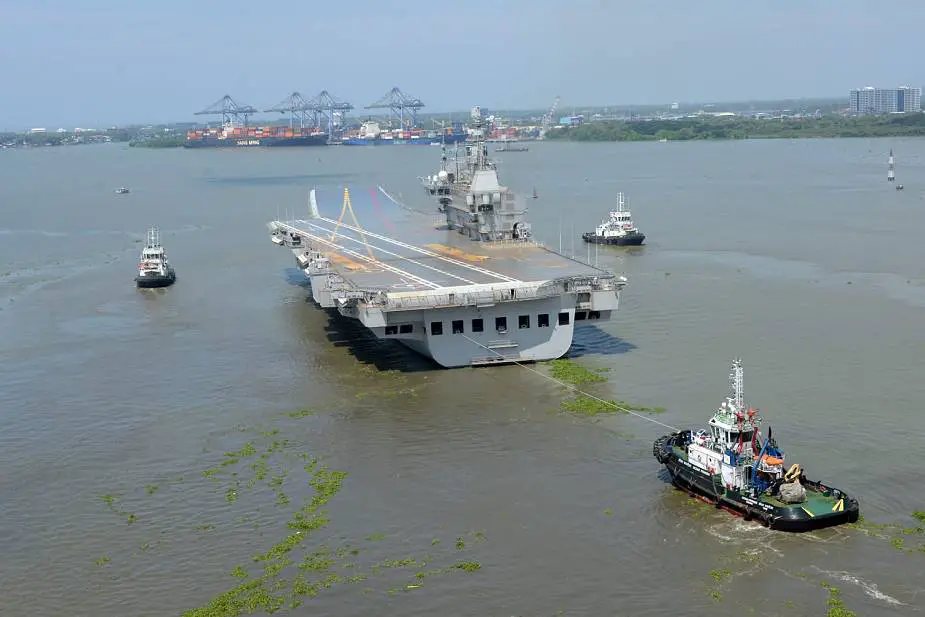Breaking news
INS Vikrant aircraft carrier for Indian Navy starts second phase of sea trials.
According to a Tweet published by Livefist on October 24, 2021, the new Vikrant aircraft carrier for the Indian Navy sailed out October 24, 2021, from Kochi for the second phase of its sea trials.
Follow Navy Recognition on Google News at this link
 The new Vikrant aircraft carrier sailed out on October 24, 2021, from Kochi for the second phase of its sea trials. (Picture source Twitter account Livefist)
The new Vikrant aircraft carrier sailed out on October 24, 2021, from Kochi for the second phase of its sea trials. (Picture source Twitter account Livefist)
The INS Vikrant, also known as Indigenous Aircraft Carrier 1 (IAC-1), is an aircraft carrier built by the Cochin Shipyard Limited (CSL) for the Indian Navy. The design of the ship started in 1999, and the keel was laid in February 2009. She was floated out of its dry dock on 29 December 2011 and was launched on 12 August 2013.
At the beginning of October this year, Navy Recognition has reported that the maiden sea trials of the indigenous aircraft carrier Vikrant have progressed very well and the second phase of trials was expected to begin at the end of October 2021 with the third phase planned for December of this year.
INS Vikrant is likely to be commissioned in 2022. At present, India has only one aircraft carrier, the Russian-origin INS Vikramaditya, a modified Kiev-class aircraft carrier and the flagship of the Indian Navy, which entered into service in 2013
The INS Vikrant will have an air component of 30 aircraft, comprising up to 26 MiG-29K fighter jets, 10 Kamov-31 airborne early warning helicopters and the soon-to-be-inducted MH-60R multi-role helicopter, besides the indigenous Advanced Light Helicopters. The ship features a STOBAR configuration with a ski jump. STOBAR ("Short Take-Off But Arrested Recovery" or "Short Take-Off, Barrier Arrested Recovery") is a system used for the launch and recovery of aircraft from the deck of an aircraft carrier, combining elements of "short take-off and vertical landing" (STOVL) with "catapult-assisted take-off but arrested recovery" (CATOBAR). Aircraft launch under their own power using a ski-jump to assist take-off.
The INS Vikrant has a length of 262 m, a beam of 62 m, a draught of 8.4 m, a depth of 25.6 m, and a loaded displacement of 45,000 tons. The ship is powered by four General Electric LM2500+ gas turbines and two Elecon COGAG (Combined gas turbine and gas turbine) gearbox driving two shafts. She will be able to reach a top speed of 30 knots (56 km/h) with a maximum cruising range of 8,000 nautical miles (15,000 km). The ship will have a crew of 196 officers, 1,449 sailors including aircrew.
The shipborne weapons of the INS Vikrant include 2x32 cells VLS for a total of 64 Barak 8 surface-to-air missiles, four AK-630 30 mm rotary cannon, and four Otobreda 76 mm naval guns. The ship is equipped with MF-STAR multifunction active electronically scanned array naval radar, RAN-40Lnaval 3D L band search radar, and Shakti EW (Electronic Warfare) Suite.


























